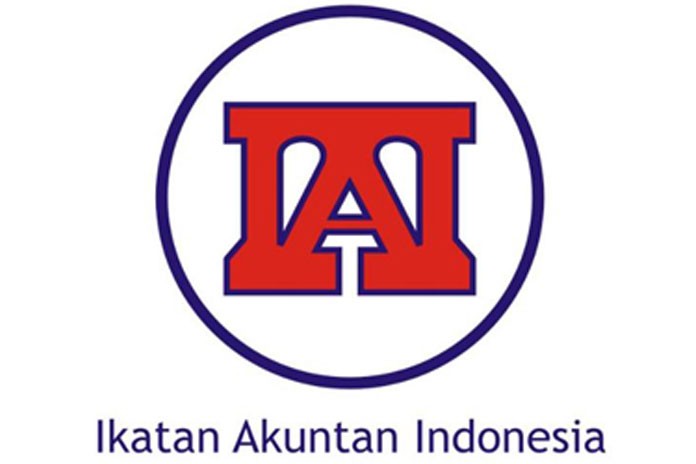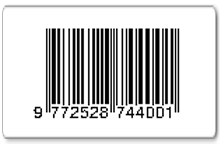INTELLECTUAL CAPITAL DAN KINERJA KEUANGAN PERSPEKTIF CAMELS : STUDI EMPIRIS PADA PERBANKAN SYARIAH DI INDONESIA
Abstract
Keywords
Full Text:
PDFReferences
Al-Musali, M. A., & Ismail, K. N. (2014). Intellectual capital and its effect on financial performance of banks:Evidence from Saudi Arabia. Procedia - Social and Behavioral Sciences 164 ( 2014 ) 201 – 207.
Anwar, A. N. (2016). Analysis Of Indonesian Islamic and Conventional Bank before and after 2008. International Journal of Economics and Finance; Vol. 8, No. 11; 2016; ISSN 1916-971X; E-ISSN 1916-9728.
Asare, A. L. (2015). Intellectual capital and bank productivity in emerging markets: evidence from Ghana. Management Decision, Vol. 54 Iss 3 pp; http://dx.doi.org/10.1108/MD-01-2015-0025.
Bontis, N., & Richardson, W. C. (2000). Intellectual Capital and Business Performancein Malaysian Industries . Journal of Intellectual Capital Vol. 1 No. 1; MCB University Press, 85-100.
Cernohorska, L. (2015). Impact of Financial Crisis on the Stability Banking Sectors in the Czech Republic and Great Britain. Procedia Economics and Finance 26 ( 2015 ) 234 – 241.
Chen, M.-C., & Hwang, S.-j. C. (2005). An Empirical Investigation Of The Relationship between Intellectual Capital and Firm Market Value and Financial Performance. Journal of Intellectual Capital Vol. 6 (02), 159-176.
Datey, D., & Tiwari, D. K. (2015). Risk Analysis Tool For Banking - CAMELS Rating System. South Asia Journal of Multidisciplinary Studies SAJMS; ISSN:2395-1079.
Deegan, C. (2004). Financial Accounting Theory. Sydney: McGraw-Hill Book Company.
Deegan, C., & Blomquist, C. (2006). Stakeholder Infuence on corporate reporting: An exploration of the Interaction between WWF-Australia and the Australian Minerals Industry. Accounting, Organizations and Society 31 (2006) , 343–372.
Dewi, L. I., & Junaidi. (2014). Kinerja Keuangan Perbankan di Indonesia Akibat Krisis Keuangan Global. Vol. 2 No.2, Juli – Desember 2014; ISSN: 2303-2235.
Dincera, H., Gencer, G., Orhan, N., & Sahinbas, K. (2011). A Performance Evaluation of the Turkish Banking Sector after the Global Crisis via CAMELS Ratios. Procedia Social and Behavioral Sciences 24 (2011) 1530–1545.
Firmansyah, I. F. (2012). Pengaruh Intellectual Capital Terhadap Kinerja Keuangan Perusahaan (Studi Empiris Perusahaan LQ 45). Jurnal Dinamika Akuntansi Vol. 4, No. 1, Maret 2012, ISSN 2085-4277, pp.1-12.
Freeman, R. E., & Reed, D. L. (1983). Stockholders and Stakeholders: A New Perspective on Corporate Governance. CALIFORNIA MANAGEMENT REVIEW Vol. XXV, No.3, Spring 1983 The Regents of the University of California.
Gasbarro, D. (2002). The Changing Relationship Between CAMEL Ratings and Bank Soundness during the Indonesian Banking Crisis. Review of Quantitative Finance and Accounting, 19: 247–260.
Goh, P. C. (2005). Intellectual capital performance of commercial banks in Malaysia. Journal of Intellectual Capital, Vol. 6 Iss 3 pp. 385 - 396.
Guthrie, J., & Yongvanich, R. P. (2004). Using Content Analysis As A Research Method To Inquire Into Intellectual Capital Reporting. Journal of Intellectual Capital Vol. 5 No. 2 Emerald Group Publishing Limited DOI 10.1108/14691930410533704, pp. 282-293.
Hosen, M. N., & Muhari, S. (2013). Efficiency of the Sharia Rural Bank in Indonesia Lead to Modified Camel. International Journal of Academic Research in Economics and Management Sciences; September 2013, Vol. 2, No. 5; ISSN:2226-3624.
Hyz, A., & Gikas, G. (2015). CAMELS and Greek Banking Sector Performance During The Crisis - An Analysis and Review of The Evidence. Acta Universitat Tislodziensis; Folia Oeconomica 5 (316); http://dx.doi.org/10.18778/0208-6018.316.02.
Jaffar, M., & Manarvi, I. (2011). Performance Comparison of Islamic and Conventional Banks in Pakistan. Global Journal of Management And Business Research Volume 11 Issue 1; ISSN: 0975-5853.
Jasvinder, M. J. (2010). Intellectual capital performance in the banking sector. Journal of Human Resource Costing & Accounting, Vol. 14 Iss 2 pp. 151 - 170; http://dx.doi.org/10.1108/14013381011062649.
Joshi, M., Cahill, D., Sidhu, J., & Kansal, M. (2013). Intellectual capital and financial performance: an evaluation of the Australian financial sector. Journal of Intellectual Capital Vol. 14 No. 2, 2013 pp. 264-285; DOI 10.1108/14691931311323887.
Karri, H. K., Meghani, K., & Mishra, B. M. (2015). A Comparative Study On Financial Performance Of Public Sector Banks In India: An Analysis On CAMEL Model. Arabian Journal of Business and Management Review (OMAN Chapter); Vol. 4, No.8; March.
Kehelwalatenna, S. (2016). Intellectual capital performance during financial crises. Measuring Business Excellence Vol. 20 Iss 3 pp. - http://dx.doi.org/10.1108/MBE-08-2015-0043.
Kuryanto, B. d. (2008). Pengaruh Modal Intelektual terhadap Kinerja Keuangan Perusahaan. Proceeding SNA XI Pontianak.
Lestari, S. D. (2012). Pengaruh Intellectual Capital Terhadap Kinerja Keuangan Perbankan Syari'ah di Indonesia. Ekuitas: Jurnal Ekonomi dan Keuangan Akreditasi No. 80/DIKTI/Kep/2012 ISSN 1411 - 0393.
Magdi El-Bannany. (2012). Global financial crisis and the intellectual capital performance of UAE banks. Journal of Human Resource Costing & Accounting, Vol. 16 Iss 1 pp. 20 - 36; http://dx.doi.org/10.1108/14013381211272626.
Mavridis, D. G. (2004). The intellectual capital performance of the Japanese banking sector. Journal of Intellectual Capital Vol. 5 No. 1, 2004 pp. 92-115; DOI 10.1108/14691930410512941.
Mention, A.-L., & Bontis, N. (2013). Intellectual capital and performance within the banking sector of Luxembourg and Belgium. Journal of Intellectual Capital Vol. 14 No. 2, 2013 pp. 286-309; DOI 10.1108/14691931311323896.
Mondal, A., & Ghosh, S. K. (2012). Intellectual capital and financial performance of Indian banks. Journal of Intellectual Capital Vol. 13 No. 4, 2012 pp. 515-530; DOI 10.1108/14691931211276115.
Muh. Sabir. M, M. A. (2012). Pengaruh Rasio Kesehatan Bank Terhadap Kinerja Keuangan Bank Umum. Jurnal Analisis, Juni 2012, Vol.1 No.1 : 79 – 86; ISSN 2303-1001.
Otoritas Jasa Keuangan. (2015). Roadmap Perbankan Syariah Indonesia 2015-2019.
Ozkan, N., Cakan, S., & Kayacan, M. (2016). Intellectual Capital and Financial Performance: A Study of the Turkish Banking Sector. Borsa istanbul Review; 10.1016/j.bir.2016.03.001.
Pertiwi, N. R., & Yusuf, M. (2013). Pengaruh Intellectiual Capital Terhadap Kinerja Keuangan Perbankan. PRESTASI VOL. 11A NO. 1A - APRIL 2013; ISSN 1411 – 1497.
Rashid, A., & Jabeen, S. (2016). Analyzing performance determinants: Conventional versus Islamic Banks in Pakistan. Borsa _Istanbul Review 16-2 (2016) 92e107 http://www.elsevier.com/journals/borsa-istanbul-review/2214-8450.
Riyadi, S. (2015). Banking Assets And Liability Management. Lembaga Penerbit Fakultas Ekonomi Universitas Indonesia.
Roman, A., & Sargu, A. C. (2013). Analysing the Financial Soundness of the Commercial Banks in Romania: An Approach Based on the Camels Framework. International Economic Conference of Sibiu 2013 Post Crisis Economy: Challenges and Opportunities, IECS 2013; Procedia Economics and Finance 6 ( 2013 ) 703 – 712.
Sadalia, I. &. (2014). Intellectual Capital dan Pertumbuhan Laba Sektor Perbankan di Indonesia. Jurnal Ekonom 17 (1): 13-18.
Shah, S. Q., & Jan, R. (2014). Analysis of Financial Performance of Private Banks in Pakistan. Procedia - Social and Behavioral Sciences 109 ( 2014 ) 1021 – 1025.
Shofiani, P. (2017). Analisis Income Smoothing Pada Perbankan Islam Negara-Negara Teluk Di Timur Tengah. Jurnal Ilmiah Akuntansi dan Keuangan, Vol.6, No.1, Bulan Juli.
Sulistiyowati, A. Y. (2009-2011). Analisis CAMEL Dalam Mempredeksi Tingkat Kesehatan Bank yang Terdaftar Dibursa Efek di Indonesia. Jurnal Ekonomi, 37-39.
Sutomo, I. (2014). Pengaruh Intellectual Capital Terhadap Net Interest Margin (NIM) pada Perusahaan Perbankan yang Terdaftar di Bursa Efek Indonesia. KINDAI Volume 10 Nomor 3.
Toarna, A., & Cojanu, V. (2015). The 2008 Crisis: Causes and Future Direction for the Academic Research. Procedia Economics and Finance 27 ( 2015 ) 385 – 393.
Ullman, A. A. (1985). Data in Search of A Theory : A Critical Examination of the Relationships Among Social Performance, Social Disclosure, and Economic Performance in U.S Firms. Academy of Management Review Vol. 10 No. 3, 540-557.
Ulum, I. (2013). Model Pengukuran Kinerja Intellectual Capital dengan IB-VAIC di Perbankan Syariah. Vol. 7, No. 1, Juni 2013.
Ulum, I., & Chariri, I. G. (2008). Intellectual Capital Dan Kinerja Keuangan Perusahaan; Suatu Analisis Dengan Pendekatan Partial Least Squares. Proceeding SNA XI. Pontianak.
Verdoliva, A. M. (2016). The impact of the Intellectual Capital Efficiency on Commercial Banks Performance: Evidence from the US. http://dx.doi.org/doi:10.1016/j.mulfin.2016.04.003.
Wijaya, N. (2012). Pengaruh Intellectual Capital Terhadap Kinerja Keuangan dan Nilai Pasar Perbankan dengan Metode Value Added Intellectual Coefficient. Jurnal Bisnis dan Akuntansi Vol. 4, No. 3, Desember, hlm. 157-180.
Yani, S. (2014). Pengaruh Intellectual Capital Terhadap Kinerja Keuangan Bank Umum Syari’ah. Skripsi. Fakultas Pendidikan Ekonomi dan Bisnis. Universitas Pendidikan Indonesia.
Yildirim, A., & Gokalp, M. F. (2016). Institutions and Economic Performance: A Review on the Developing Countries. Procedia Economics and Finance 38 ( 2016 ) 347 – 359.
Zoubi, D. O. (2016). Convergence in bank performance for commercial and Islamic banks during and after the Global Financial Crisis. http://dx.doi.org/doi:10.1016/j.qref.2016.06.013; The Quarterly Review of Economics and Finance.
DOI: http://dx.doi.org/10.35448/jrat.v12i1.5348
Refbacks
- There are currently no refbacks.
pISSN 1979-682X eISSN 2528-7443
Jurnal Riset Akuntasi Terpadu (JRAT) is licensed under a Creative Commons Attribution 4.0 International License







